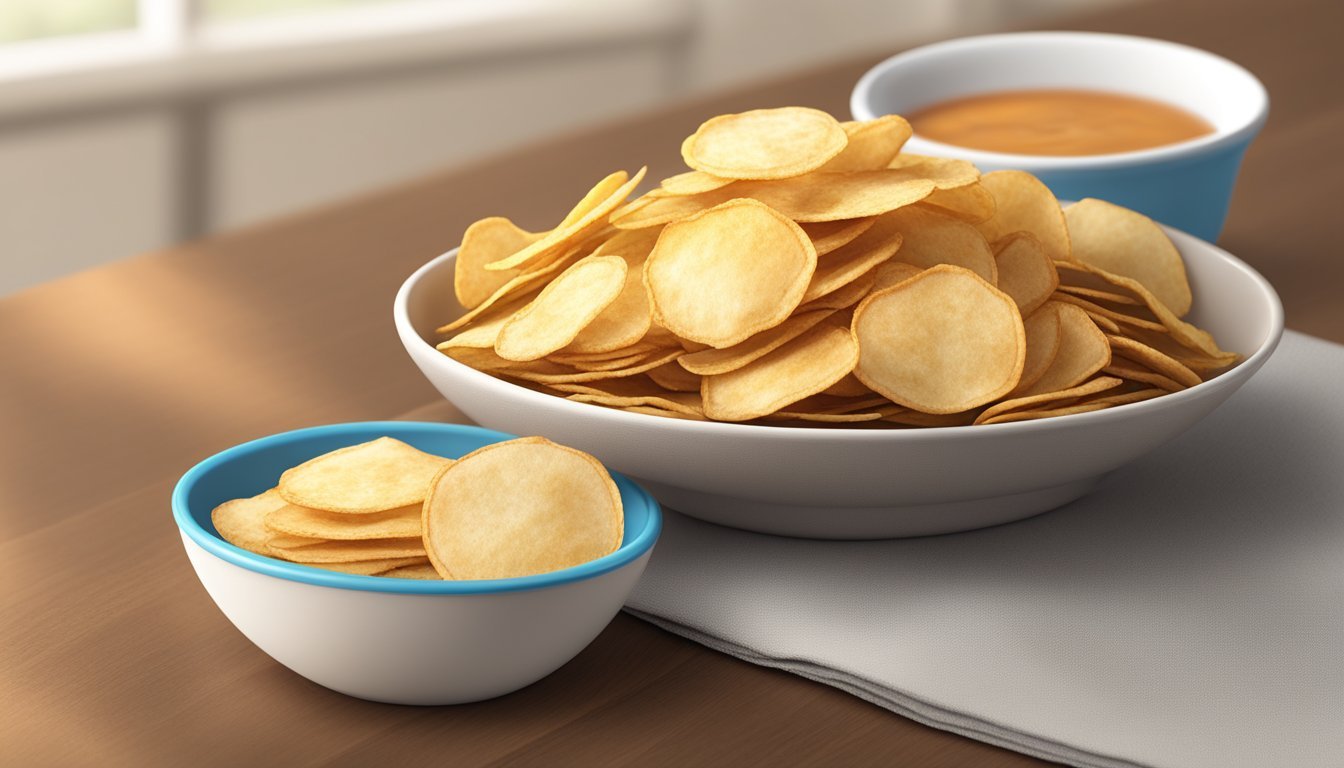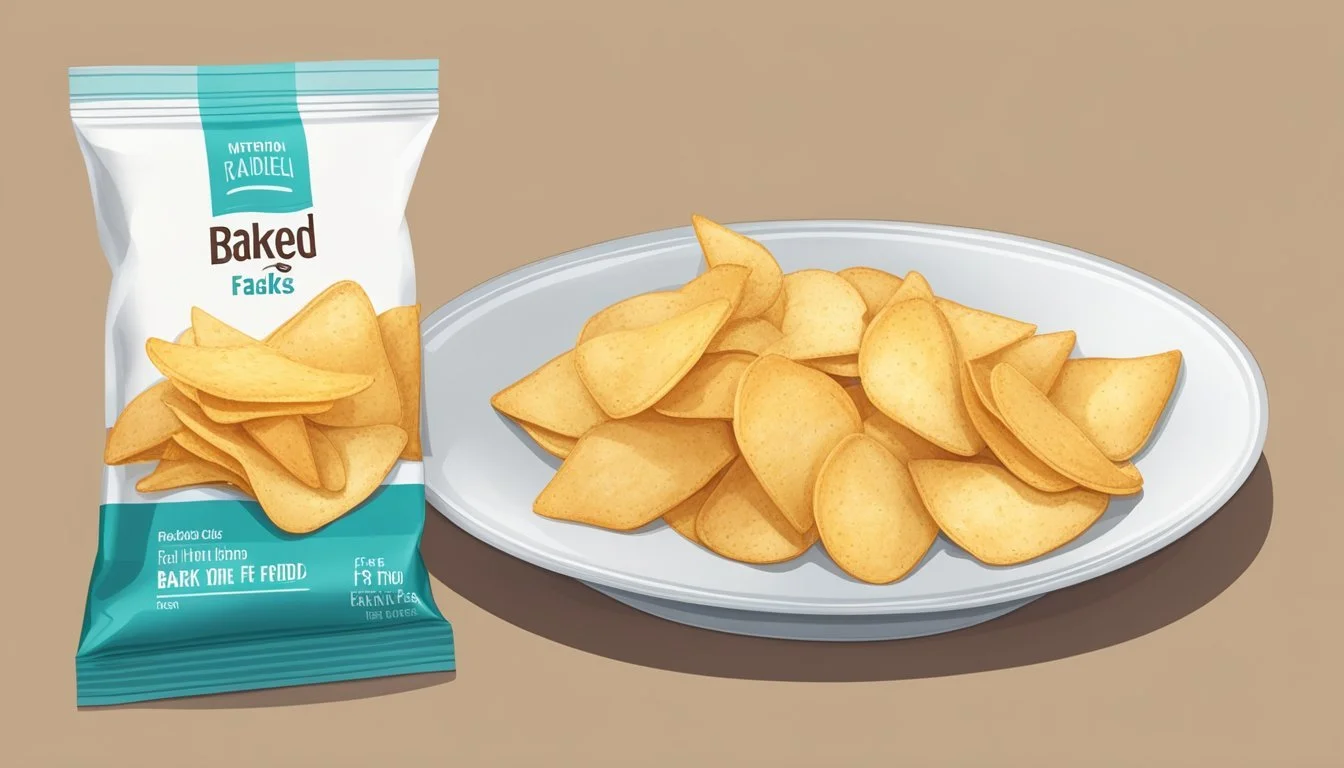Are Baked Chips Healthier Than Fried Chips?
Unpacking the Nutritional Facts
The health implications of snack choices are a frequent topic of discussion among those striving to maintain a healthy eating routine. When it comes to chips, a popular snack, many individuals look for a healthier option to the traditional fried variety. Baked chips are often marketed as a more health-conscious choice, with brands promising less fat compared to their fried counterparts. For example, baked chips are said to typically contain 65% less fat, which is considerable given the high fat content normally associated with fried snacks (What wine goes well with snacks?).
Analyzing the nutrition content, baked alternatives appear to have advantages such as lower total fat and saturated fat levels; a single-serving bag of baked chips can have roughly half the fat of fried chips. Yet, this doesn't tell the entire story. While they may have less fat, baked chips may have increased carbohydrate content due to added starches and sugars aimed at enhancing flavor and texture. This aspect often results in baked chips still being categorized as a heavily processed food product.
Therefore, while baked chips might offer some benefits over fried chips in terms of reduced fat content, they are not necessarily a healthful food. The processing involved and additional ingredients mean baked chips still require moderation within a balanced diet. Consumers should remain mindful of the ingredients and nutritional information, understanding that the healthiest snack options are typically those that are minimally processed and close to their natural state.
Understanding Chips
In assessing the health implications of chip consumption, it is essential to differentiate between the differing types, understand their production processes, and recognize their market positions.
Types of Chips
There are primarily two types of potato chips prevalent in the market: regular potato chips and baked potato chips. Regular potato chips are typically fried in oil, whereas baked potato chips are prepared in an oven or air fryer, using significantly less oil.
Regular Potato Chips: Prepared by slicing potatoes (What wine goes well with potatoes?) thin, submerging in hot oil until crisp, and seasoned with salt and various flavorings.
Baked Potato Chips: Potatoes are sliced, lightly coated with oil if at all, and baked to achieve a crunchy texture.
Ingredients and Production Processes
Both regular and baked potato chips start with similar basic ingredients: potatoes, oil, and salt. The difference lies in the production process.
Frying: Involves cooking the potato slices in hot oil, which infuses them with oil and creates a distinctive texture and flavor. High in calories and fat.
Baking: Cooking method using dry heat in an oven or air fryer, typically resulting in lower fat content.
Flavor: Additional flavorings can vary but often include an array of spices and starches to enhance taste and texture.
Method Fat Content Caloric Value Frying Higher Higher Baking Lower Potentially lower
Market Presence and Consumption
The two types of chips hold different spaces on supermarket shelves and consumers' diets.
Supermarket Shelves: Both varieties of chips are commonly available, with regular chips traditionally dominating the market.
Baked Chip Market Size: There has been a growth in the baked chip market as manufacturers respond to the increasing demand for healthier salty snack alternatives.
Manufacturers and Market Size: Entities such as Allied Market Research provide analysis of market size and trends, indicating rising consumer preference for alternative snacking options like baked chips.
The preference for either type of potato chip can vary based on taste preferences, dietary considerations, and availability, but the substantial presence of both in the marketplace attests to their ongoing popularity.
Nutritional Comparison
The discussion on whether baked chips are healthier than fried chips centers largely upon their nutritional value, particularly focusing on calories, fat content, and the presence of nutrients such as sodium and potassium.
Calories and Fat Content
Baked chips typically contain fewer calories and less total fat compared to their fried counterparts. A standard serving of baked chips may have around 131 calories and 5 grams of fat, including about 0.7 grams of saturated fat. In contrast, fried chips usually contain about 149 calories, with 10 grams of total fat and 1 gram of saturated fat.
Salt and Sugar Levels
Regarding sodium content, baked chips have approximately 150 mg. While they are often marketed as low-fat alternatives and might cater to a craving for something salty, it remains essential to consume them in moderation due to their salt levels. Sugar levels are generally not a significant concern with savory snacks like potato chips, but some flavored varieties may contain added sugars.
Vitamins and Minerals
Fried and baked chips are not notable sources of vitamins or beneficial nutrients like fiber. They generally provide negligible amounts of vitamin C and are not a significant source of vitamins. However, they do contain some minerals such as potassium; baked chips contain about 202 mg of potassium. It's important to remember that while baked chips might have better nutritional content in some areas, neither option is rich in vitamins or minerals.
Health Considerations
In examining the health impacts of baked versus fried chips, it is essential to consider their effects on heart health, their processed nature and added substances, as well as their influence on digestion and nutrient uptake.
Heart Health and Weight Management
Baked chips generally contain fewer calories and less fat, specifically saturated fat, compared to their fried counterparts. For instance, a typical serving of baked chips has approximately 131 calories and 5 grams of fat, while fried chips contain around 149 calories and 10 grams of total fat. Consuming foods high in saturated fat can contribute to heart disease. Therefore, opting for baked chips can be a wiser choice for individuals aiming for weight management and heart health through mindful moderation of caloric and fat intake.
Processed Foods and Additives
Baked chips are often marketed as a healthier alternative, but they are still a type of processed food. While they may have reduced unhealthy fat content, they can still carry additives such as excess salt or flavor enhancers. It's important to check labels for sodium content, which can be high in both fried and baked chips. A standard serving of baked chips can contain up to 150 mg of sodium. High sodium consumption is a known risk factor for developing hypertension and other cardiovascular conditions.
Digestion and Dietary Impact
From a dietary standpoint, most chips, regardless of being baked or fried, tend not to offer significant nutritional benefits, such as dietary fiber, which is crucial for healthy digestion. Both types of chips might displace healthier snacking options that could provide essential nutrients and promote satiety, thereby supporting healthy eating patterns. Individuals concerned with digestion and maintaining a balanced diet should consider the overall role of chips within their diet and opt for options that couple enjoyment with nutrition.
Healthier Alternatives and Modifications
While baked chips are generally lower in calories and fats compared to their fried counterparts, one can still make healthier choices through homemade recipes, alternative snacks, and controlled portions.
Homemade and Ingredient Choices
Homemade baked chips offer more control over the ingredients used, which can enhance their health profile. By selecting sweet potatoes or whole grains as a base, one can benefit from additional fiber and nutrients. Using healthier oils like olive oil, coconut oil, or sunflower oil in moderation can introduce healthy fats without the need for refined carbohydrates. A tool such as a mandolin can ensure even slicing for a consistent texture enhancement.
Alternative Snack Options
For those seeking a healthy snack with a satisfying, crunchy bite, there are numerous alternatives to chips. Kale chips are a nutrient-packed option, easy to make by tossing kale leaves in a small amount of oil and baking until crisp. Snacks made from beans or legumes can provide a satisfying texture similar to chips while offering protein and fiber.
Portion Control and Eating Habits
Even healthier alternatives can contribute to an unbalanced diet without proper portion control. One should consider the portion size when consuming baked chips or other snacks, ensuring it aligns with their dietary needs. Focusing on a balanced diet rich in fruits, vegetables, lean proteins, and healthy fats is crucial, with snacks being enjoyed in moderation.
Texture and Flavor Profiles
When considering the health aspects of baked versus fried chips, an often overlooked but important factor is the texture and flavor profiles, which play a significant role in consumer satisfaction.
Crunch Factor
The crunchiness of a chip is a critical textural attribute that defines its appeal. Baked chips tend to have a lighter, airier crunch compared to fried chips, which boast a denser, more pronounced crunch. This difference is primarily due to the cooking methods—baking usually results in a drier texture, while frying in oil contributes to a firmer bite.
Seasonings and Enhancements
Both baked and fried chips often include a variety of seasonings to enhance their flavor. It is not uncommon for pepper, sugars, and other spices to be added to cater to a range of palates. Baked chips, however, may have less oil-based seasonings adhered to them due to their lower fat content. This can affect not only the flavor but also how well the seasonings stick to the chips.
Fried chips: May retain more seasonings due to oil absorption.
Baked chips: Lighter coat of flavoring, often perceived as less salty.
Consumer Preferences and Perceptions
Consumer preferences vary widely, but many associate fried chips with a more satisfying savory flavor and fulfilling craving due to their rich texture and mouthfeel. Baked chips might be perceived as less flavorful by some, though they cater to those seeking a lighter option. As for the appeal of flavor enhancements like carrots or other vegetable-based seasonings, they might be more commonly found in baked varieties to align with the health-conscious positioning of these products.
Flavor: Fried chips typically offer a stronger, more traditional potato chip flavor.
Perception: Baked chips may be seen as healthier, influencing consumer choice.
Safety and Chemical Considerations
When evaluating the healthiness of baked versus fried chips, it is pertinent to consider the presence of compounds such as acrylamide and the types of oils used during processing, which can have different health implications.
Acrylamide Levels
Acrylamide is a chemical that can form in some foods during high-temperature cooking processes, such as frying, roasting, and baking. The production of acrylamide is more prevalent at temperatures above 120°C (248°F) and in foods that are rich in carbohydrates. Baked chips may contain acrylamide, albeit typically at lower levels than their fried counterparts due to the lower temperatures and shorter cooking times used in baking.
Baked Chips: Tend to have reduced acrylamide content.
Fried Chips: Generally have higher levels of acrylamide due to higher cooking temperatures.
Use of Vegetable Oils
Vegetable oils are used in the production of both baked and fried chips. The type of oil and the manner in which it is used impact the nutritional profile of the final product. Oils high in saturated and trans fats can pose greater risks to heart health.
Soy Lecithin: Often included in the ingredients for its emulsifying properties, it doesn't significantly affect the healthiness of the vegetable oils.
Frying:
High temperatures can cause the oils to break down, generating unhealthy compounds.
The oil can become hydrogenated, increasing trans fat content.
Baking:
Uses less oil overall, leading to a lower total fat content.
Baked goods may still contain trace amounts of vegetable oils like soybean or canola oil.







